- Details
-
Last Updated: Tuesday, 02 August 2016 18:42
Alexandra Morosco reflects on Limestone: Keeper of the ancestors
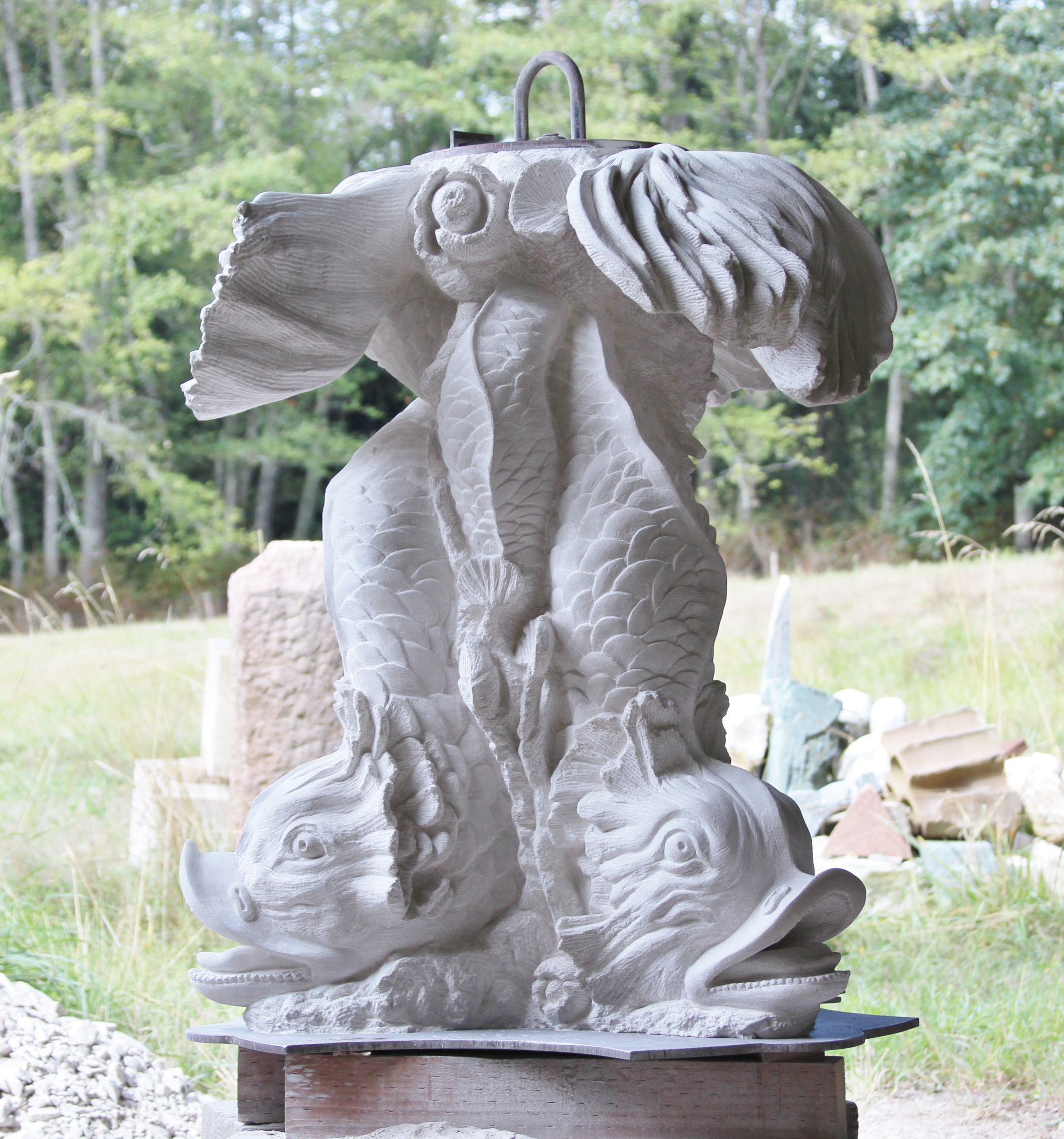 Welcome to the Limestone family! Meeting the Limestone family is a lot like meeting The Johnson’s or the Smith’s; you can open any phone book and there are pages of them, but if you were to enter into their homes you would find they are vastly different, have totally different styles and personalities. Some are hard and brittle, some are soft spoken, and delightful to work with.
Welcome to the Limestone family! Meeting the Limestone family is a lot like meeting The Johnson’s or the Smith’s; you can open any phone book and there are pages of them, but if you were to enter into their homes you would find they are vastly different, have totally different styles and personalities. Some are hard and brittle, some are soft spoken, and delightful to work with.
In the geologic family tree, The Oolitic Limestone’s are the most consistent in color and structure. In the U.S you will find soft gentle southerner’s from Texas, like Leuders or Cream or Pearl. As you travel north through the limestone belt of the country, the colors get a little warmer, such as Kansas limestone which makes up the layers of the golden plains. Indiana limestone holds the reigning name for limestone that serves all sculptors, architects, and masons. Who could not love this well-behaved, diplomatic stone? You will also find excellent examples in England and France, such as Bath limestone in England.
Oolitic limestone is easily hand carved with steel or very fine carbide chisels, steel files and sanding is only needed to about 80 or 120 grit. Other hard limestone, such as Oklahoma, New Mexico, Canadian, Belgian Bleu or Black Irish are very dense and hard, and often come in a wider variety of colors and need heavier carbide chisels. Diamonds for cutting and polishing never hurt the cause, but if you are a glutton for hard work - most can be carved by hand.
Limestone will generally not reveal swirly lollipop colors and bubblegum flavors, but it allows the dance of light to show off what your hand brings to the surface of the stone. It allows the purity of your form, texture and line to speak. It is said that poetry makes for strong language in its brevity of words. With less pattern-chatter, I find limestone a lot like poetry; it demands the lines and form of the sculpture to hold your attention, not the color and pattern, which I feel are more akin to music & dance.
I also appreciate the metaphor of limestone’s ancestral lineage of stone. Before she was a stone, she was fish - millions of fish. She was plankton and algae. She was clam and snail and oyster. Millions of years of natural history layered in a silty time-bed tell the story. Everything that ever lived, fought, birthed, foraged and died live in that stone. Before borders and boundaries and before tribes quarreled, there were burgeoning quarries beneath the surface of the earth’s thin layer of soil. Yes, Terra Firma has many families that make up its content, but Limestone is the family that holds the history of the living. She is the Keeper of the Ancestors in a geological catalog set in stone, just as we as sculptors are the keepers of stories of our time and culture, set in stone.
- Details
-
Last Updated: Tuesday, 02 August 2016 18:41
Stephanie Robison simply loves stone.
I started my love affair with stone a little over ten years ago with Danby marble from Vermont. I was enamored by the sharpness of it, the predictability of how it breaks, the way it yields and responds to a chisel. Having tried many other types of stone, I keep coming back to marble. Marble is so lush and magical the way it sparkles. Even though marble holds the most allure for me, I would have to admit to feeling the most pure joy when carving limestone with just a hammer and chisel. There are some gorgeous types of limestone out there and, perhaps because it is a more subdued pallet, it can be extremely rewarding to experiment with textures on a limestone surface.
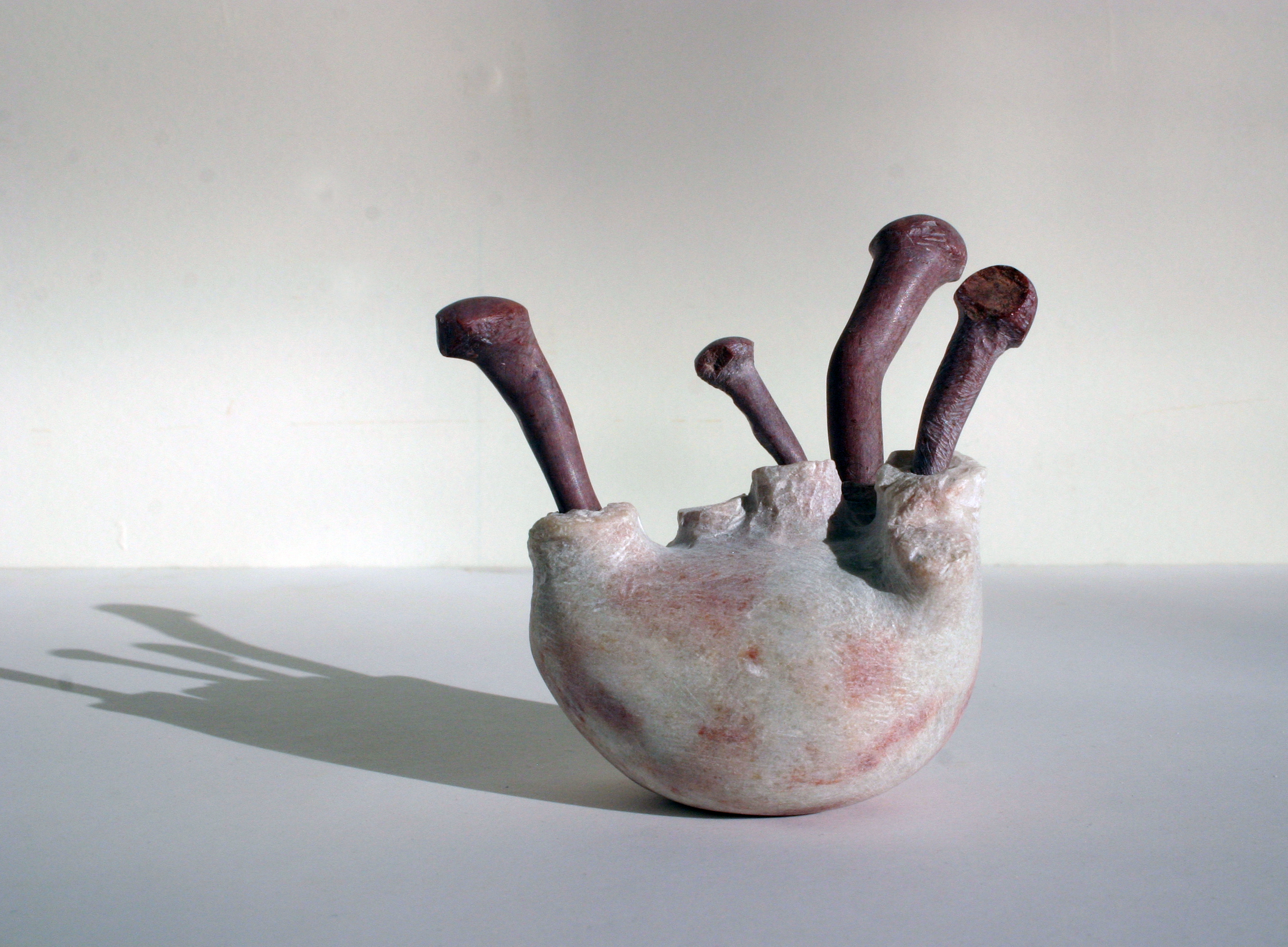 For me the process of sculpting and carving stone is an influx moment, based on a continuous searching of the materials’ intrinsic qualities and its possibilities for expression. Finding the process itself conducive to further experimentation, I enjoy combining materials and forms that quite often contradict their final aesthetic/functional appearance such as: marble that is carved to appear soft and fabric that is sewn to be rigid and architecturally structured. In order to emphasize this visual reverse play between materials, I also reevaluate the potential of various colors and textures of stone. Pink marble won my devotion early on; the color was exciting, fleshy, playful and worked well with the soft, stacked, pillow-like forms I was creating. I found yellow marble intriguing to work with because its color could be both repulsive and beautiful at the same time. I search for stone that has attractive color but not the show-stopping kind. A solid color is best – something I can work with that doesn’t scream out “Look at me I am a beautiful piece of stone!!” My desire is for people to recognize and enjoy the forms I am creating before understanding or knowing the material it is created from.
For me the process of sculpting and carving stone is an influx moment, based on a continuous searching of the materials’ intrinsic qualities and its possibilities for expression. Finding the process itself conducive to further experimentation, I enjoy combining materials and forms that quite often contradict their final aesthetic/functional appearance such as: marble that is carved to appear soft and fabric that is sewn to be rigid and architecturally structured. In order to emphasize this visual reverse play between materials, I also reevaluate the potential of various colors and textures of stone. Pink marble won my devotion early on; the color was exciting, fleshy, playful and worked well with the soft, stacked, pillow-like forms I was creating. I found yellow marble intriguing to work with because its color could be both repulsive and beautiful at the same time. I search for stone that has attractive color but not the show-stopping kind. A solid color is best – something I can work with that doesn’t scream out “Look at me I am a beautiful piece of stone!!” My desire is for people to recognize and enjoy the forms I am creating before understanding or knowing the material it is created from.
I have huge respect for chlorite as a carving stone due to the contrast in color between a finished and unfinished surface. I found it rewarding to go from the greenish-gray to a beautiful polished black surface. Occasionally, I work with alabaster but it tends to be too high-maintenance for my liking. I find myself resenting having to put a pillow under it and treat it gently. And sanding Alabaster is torturous. Although admittedly, I still have lustful feelings toward the orange variety and, since it is now hard to get ahold of, I deem it alone worthy of the tender attentiveness required.
I definitely have a soft spot for pyrophyllite, commonly called Wonderstone. It comes in all kinds of fun colors and (almost) effortlessly takes fine detail. Sanding and polishing are two of my least favorite activities but this type of stone is actually fun to sand! You can clearly see when you need to change grits and are quickly rewarded with brilliant saturated color. Although, I have carved pieces of Wonderstone as large as 180lbs I prefer to work this stone into small sculptures.
I enjoy doing work that is both additive and subtractive, often creating one sculpture from multiple parts of different colors of pyrophyllite.
- Details
-
Last Updated: Tuesday, 02 August 2016 18:40
Daniel Michael talks about stone and shows us a marble piece
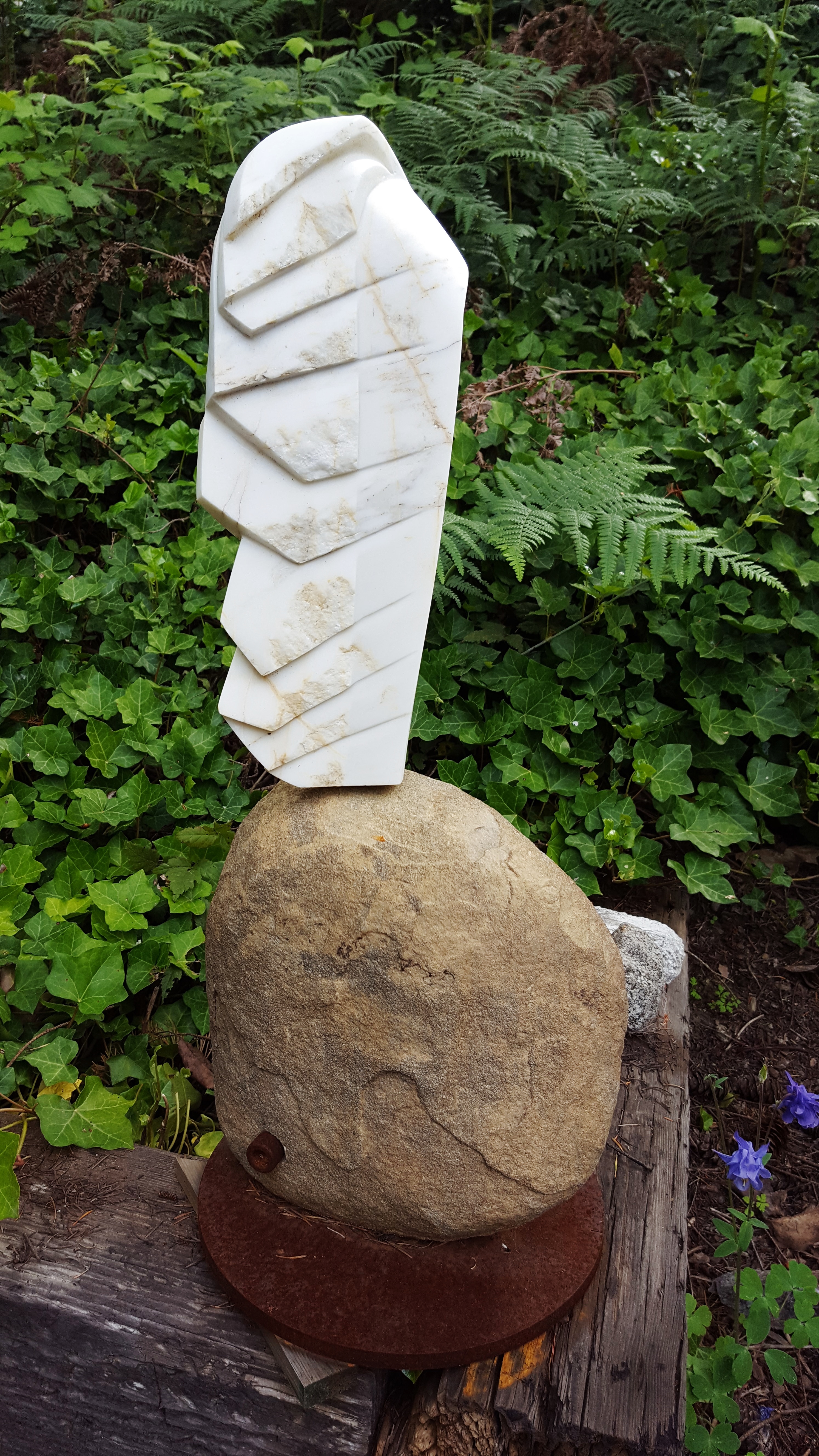 Slowly walking through the morning air, listen to the warble of thrushes moving through the remaining trees around the wetlands. A haze of dust begins to rise above the green field. A cloud moves over the gathered workers and their canopies. An energetic flirtation begins. As usual, it seems to beam in from over there, that other. Looking back, it probably starts down in the unconscious local arena. This is reaching out, exploring the environment for something new. Humans have always done and excelled at this activity.
Slowly walking through the morning air, listen to the warble of thrushes moving through the remaining trees around the wetlands. A haze of dust begins to rise above the green field. A cloud moves over the gathered workers and their canopies. An energetic flirtation begins. As usual, it seems to beam in from over there, that other. Looking back, it probably starts down in the unconscious local arena. This is reaching out, exploring the environment for something new. Humans have always done and excelled at this activity.
Beginning anew. Begin anew. Begin. Then it all revolves around anew. This engagement of process with relationship amongst the multitude of things that seemingly make up the world of experience. It’s this unending discovery of novelty that the mind continues to play with, and ego suffers with. This constant interchange of energy and form sets up the ongoing business of creativity and relationship.
With no thought about it, something suddenly enters into consciousness and gains the spotlight of attention. No warning buzzer, no drumbeat nor introductory preamble, just the flood of associated imagery and storytelling from all possible and imagined references. But wait, isn’t that the most beautiful and stunning piece of stone ever seen? That color, ahhh, it so much brings up this image. The shape itself now conjures some dancing embers of a fire that resembles another dream that is yet to be realized. Hmmm, crystalline structures catching light in just that manner to be seen, to be noticed.
Yes, that, well, what if this one is moved over here. Stand it up on that vertical. Where does this now set up relation to the world? If, maybe it rolled around, the form from this side merging with the shape there. Oh, this storyline already begins to move towards form. Already the process moves along and tools begin to beckon awareness.
What about hardness, softness, is it brittle? Spray some water; color explodes. Wait, wait, where was this song going, before the volume was pushed up, before the horns expanded the view? Beautiful, wonderful intensity. Walk away. Rush back. More water, please. Question the scale, the budget, the time. The whole commitment is questioned and yet, and yet it all flows so easily through all this activity.
Seamlessly lost in the process, a new relationship is established. This new favorite is honored again and again with recurring activity and energetic ritual. The storyline slowly proceeds and locks into the immediacy of the moment. The past having been worn away in worked process, the tale continues toward tomorrow. And perhaps another stone?
- Details
-
Last Updated: Thursday, 26 December 2019 16:45
Carl Nelson currently loves Olivene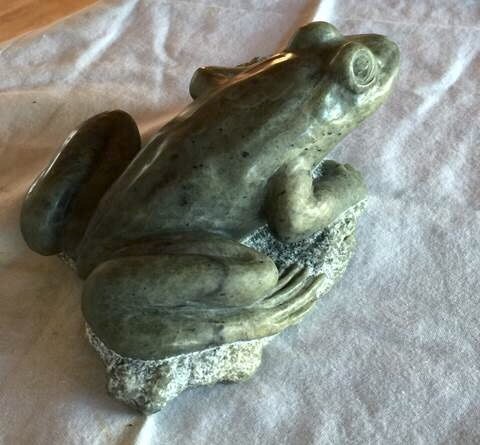
I don’t have a favorite stone, but I’m currently in a serious courtship with Olivene, better known to most of you as “dunite”.
The stone, as found at the top of the Cascade Mountains by Mount Baker in Washington, is a tan orange on the outside and anywhere from a lime green with veins of deep blue green to an almost solid dark green. If found in the rivers and streams surrounding the sisters either side of Mt Baker, WA, they are light tan with that same green interiors. See collection of river cobbles and big pieces from quarry.
Olivene has a coarse hexagonal crystalline structure (1/16”-1/8”) with a preference to fracture along hexagonal planes. You can see these forms and fractures occurring in the outcroppings and when you attempt to bust apart a river cobble. In collection photo above you can see the difference between the rounded river cobbles and the orange tan quarry stone. Below is photo of one of the pieces from the south peak of the sisters and the inside of a 10 inch river cobble whose rind was cleaved off (note shoe for scale).
Olivene works well with pneumatic tools (bushing and chiseling) for gross shaping, but the tools of choice for final work will be spinning diamonds. Sintered tools work well but electroplated do a nice job, last a long time, and are less expensive. It takes a high gloss reflective polish with diamond pads and/or paste.
It’s easy to pull figurative as well as abstract shapes from the stone and has the quality of being translucent when made thin. It’s the translucency that has my interest and causes me to think about forms and ways to get light through a piece.
- Details
-
Last Updated: Tuesday, 02 August 2016 18:41
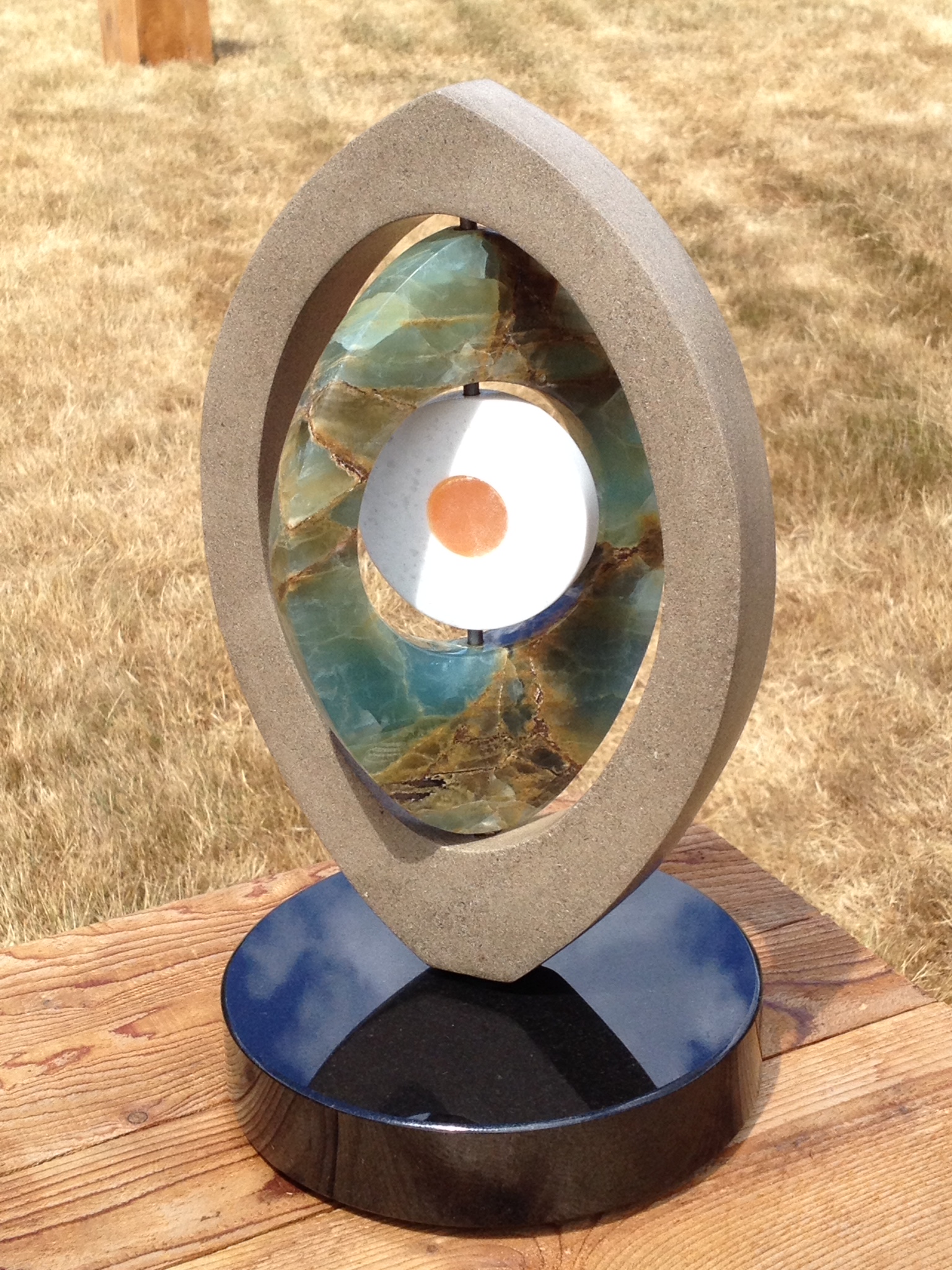 Bob Olander loves blue/green onyx and marble
Bob Olander loves blue/green onyx and marble
My stone preferences change over time and with the project I have in mind. My current favorite is a blue/green onyx from South America, which I've been carefully hoarding for special projects and inspiration. I like this stone for the striking colors, random patterns, and its marvelous translucence. I've always loved how light interacts with stone, especially when it's translucent. Many of my pieces are shaped very thin and delicate to allow light to shine through.
One preference that hasn't changed over the years is my attraction to marble in its many colors and varieties. It's not so much how the stone looks, but my deep emotional attachment to this material. There is something profound and magical about taking stone that began in seas millions of years ago, rose into mountains, was transformed by extremes of heat and pressure, journeyed thousands of miles on drifting continents, and then be able to sculpt it into a form that creates an intellectual and emotional response.
One of my latest interests is combining translucent and opaque stone in sculpture that can be moved in different directions, depending on the light and your mood. In this piece called Io, after one of Jupiter's moons, the outside is limestone, then blue green onyx, and then white marble with an orange calcite center. It is pinned and sleeved so that all elements (except the orange calcite center) can be rotated independently. It stands about 20 inches high.
As far as future directions, I am experimenting with incorporating colored and translucent glass with dark granite. It's a difficult yet exciting challenge, and I'm curious to see where it will lead.
 Welcome to the Limestone family! Meeting the Limestone family is a lot like meeting The Johnson’s or the Smith’s; you can open any phone book and there are pages of them, but if you were to enter into their homes you would find they are vastly different, have totally different styles and personalities. Some are hard and brittle, some are soft spoken, and delightful to work with.
Welcome to the Limestone family! Meeting the Limestone family is a lot like meeting The Johnson’s or the Smith’s; you can open any phone book and there are pages of them, but if you were to enter into their homes you would find they are vastly different, have totally different styles and personalities. Some are hard and brittle, some are soft spoken, and delightful to work with. 
 For me the process of sculpting and carving stone is an influx moment, based on a continuous searching of the materials’ intrinsic qualities and its possibilities for expression. Finding the process itself conducive to further experimentation, I enjoy combining materials and forms that quite often contradict their final aesthetic/functional appearance such as: marble that is carved to appear soft and fabric that is sewn to be rigid and architecturally structured. In order to emphasize this visual reverse play between materials, I also reevaluate the potential of various colors and textures of stone. Pink marble won my devotion early on; the color was exciting, fleshy, playful and worked well with the soft, stacked, pillow-like forms I was creating. I found yellow marble intriguing to work with because its color could be both repulsive and beautiful at the same time. I search for stone that has attractive color but not the show-stopping kind. A solid color is best – something I can work with that doesn’t scream out “Look at me I am a beautiful piece of stone!!” My desire is for people to recognize and enjoy the forms I am creating before understanding or knowing the material it is created from.
For me the process of sculpting and carving stone is an influx moment, based on a continuous searching of the materials’ intrinsic qualities and its possibilities for expression. Finding the process itself conducive to further experimentation, I enjoy combining materials and forms that quite often contradict their final aesthetic/functional appearance such as: marble that is carved to appear soft and fabric that is sewn to be rigid and architecturally structured. In order to emphasize this visual reverse play between materials, I also reevaluate the potential of various colors and textures of stone. Pink marble won my devotion early on; the color was exciting, fleshy, playful and worked well with the soft, stacked, pillow-like forms I was creating. I found yellow marble intriguing to work with because its color could be both repulsive and beautiful at the same time. I search for stone that has attractive color but not the show-stopping kind. A solid color is best – something I can work with that doesn’t scream out “Look at me I am a beautiful piece of stone!!” My desire is for people to recognize and enjoy the forms I am creating before understanding or knowing the material it is created from.

 Bob Olander loves blue/green onyx and marble
Bob Olander loves blue/green onyx and marble 